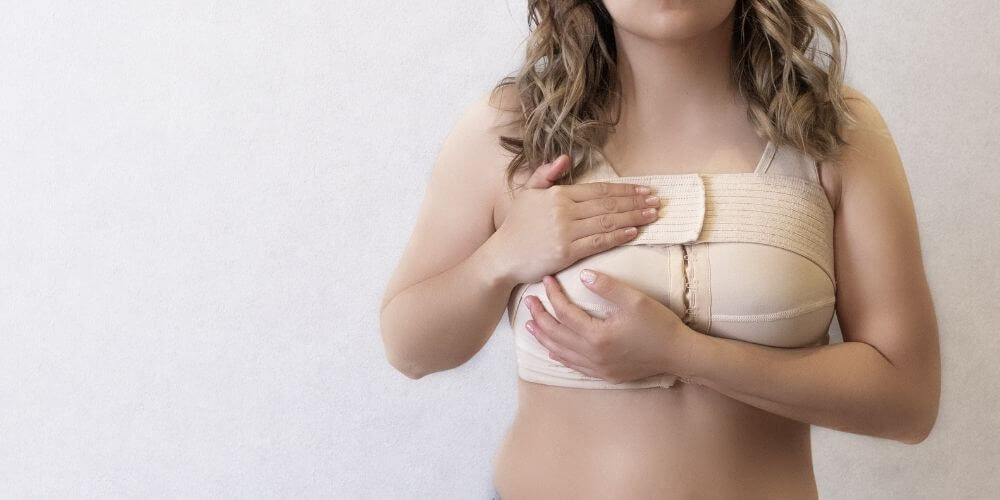If you are planning to breastfeed after breast surgery, you may have a lot of questions and concerns! In fact, a very common misconception is that mothers won’t be able to produce enough milk after having breast surgery. While this may affect some moms, this is most certainly not the rule. We are going to break down important things to consider, debunk some myths, and provide some tips for moms who plan to breastfeed after breast surgery.
Things to consider if planning to breastfeed after breast surgery:
- Why was surgery done in the first place? What type of surgery?
- Depending on the type of surgery, breast augmentation vs. reduction for example, the surgeon will need to make incisions accordingly. Breast reduction may require more incisions and removing glandular tissue.
- Where did the surgeon make the incisions? Were there nerves or ducts severed?
- There are four main incisions that may be done for breast surgery: axillary (underarms), periareolar (around the nipple/ or half moon), inframammary (below the breast) and transumbilical (belly button) incisions. Where and how many cuts the surgeon made is important. For example, axillary incisions may be made to ensure that periareolar incisions may not have caused damage to nerves or ducts. Damage to the functionality of nerves and connection of ducts will have an impact on the amount of milk that is able to be produced.
- Was there enough glandular tissue to begin with?
- A mother who had insufficient glandular tissue prior to breast surgery, common with tubular, widely spaced or asymmetrical breasts, may be at higher risk for having breastfeeding difficulties for reasons unrelated to the surgery. Since this tissue is important in milk milking, these moms may think that their inadequate milk production is due to severed ducts due to breast augmentation or removal of tissue during a breast reduction but really would have had these issues even without having a history of surgery.
- How many surgeries have I had?
- Multiple surgeries means multiple incisions and more risk of damage to the nerves and ducts.
- Where were the implants placed?
- Implants placed below the muscle vs. on top of the muscle to reduce chances of difficulties is preferable. Placing implant(s) beneath the muscle is thought to avoid pressure to ducts and glands. In doing so this may prevent obstructing milk flow, avoiding mastitis and therefore not have issues with milk production and removal.
Misconceptions about breastfeeding after breast surgery:
- Will breastfeeding alter the work that was done during my surgery?
- Size and shape of breasts change during pregnancy. Please know that your body will go through changes despite your decision to breastfeed.
- Will implants alter the composition of my breast milk?
- There is no data that tells us it’s contraindicated. It is safe to provide milk for your baby.
- Can I still massage my breast for milk production with breast implants?
- Mothers may be afraid to touch their breasts thinking they may make the implant rupture, particularly massaging breasts when engorged in attempts to assist with milk flow. Using your hands to massage your breasts may assist with effectively getting more milk while feeding your baby or while pumping to alleviate engorgement. It is also helpful to note that there is no evidence that states breastfeeding is contraindicated even with a ruptured implant. You may in fact continue breastfeeding and or pumping.
- Will I be able to produce enough milk if I had breast surgery?
- Production of milk after surgery depends on the type and execution of the surgery. Reviewing the considerations of this blog, and discussing them with your doctor, will help you understand whether your surgery may impact production. It is important to note that nerves and ducts that were severed during surgery may grow back together or form new pathways, and nerves may regain functionality, enabling the mother to produce milk. It is definitely suggested to speak with a Lactation Professional about ways to stimulate milk production and encourage milk removal.
Keep the following in mind when embarking on a breastfeeding journey after breast surgery:
- While the concerns listed in this blog are things to be considered, remember that they are not a recipe for breastfeeding failure. In fact, most moms and babies do just fine!
- Understanding the anatomy of the breast and how they work is important and should be discussed with your lactation consultant and surgeon.
- Arrange for careful and close monitoring by IBCLC and pediatrician to ensure proper, frequent and effective feeding and growth of the baby is occurring.
- Watch for any signs of clogged ducts and/or mastitis. Good breast care is especially important those first few days and weeks.
- Breastfeeding with a history of breast surgery is really common, so there is no need to worry!
- Asking questions and working closely with your medical team is important.
- Recommendations for skin to skin contact, rooming in with baby after delivery, feeding often and effectively are still the same for all moms and should be the primary focus.
Lastly, it’s not all or nothing. If pumping and supplementing are part of the care plan, that’s ok! Any and all breastfeeding/ providing expressed breast milk to the baby in any and all amounts has its benefits for both mom and baby.
Would you like to share your experience breastfeeding after breast surgery? Comment below!




